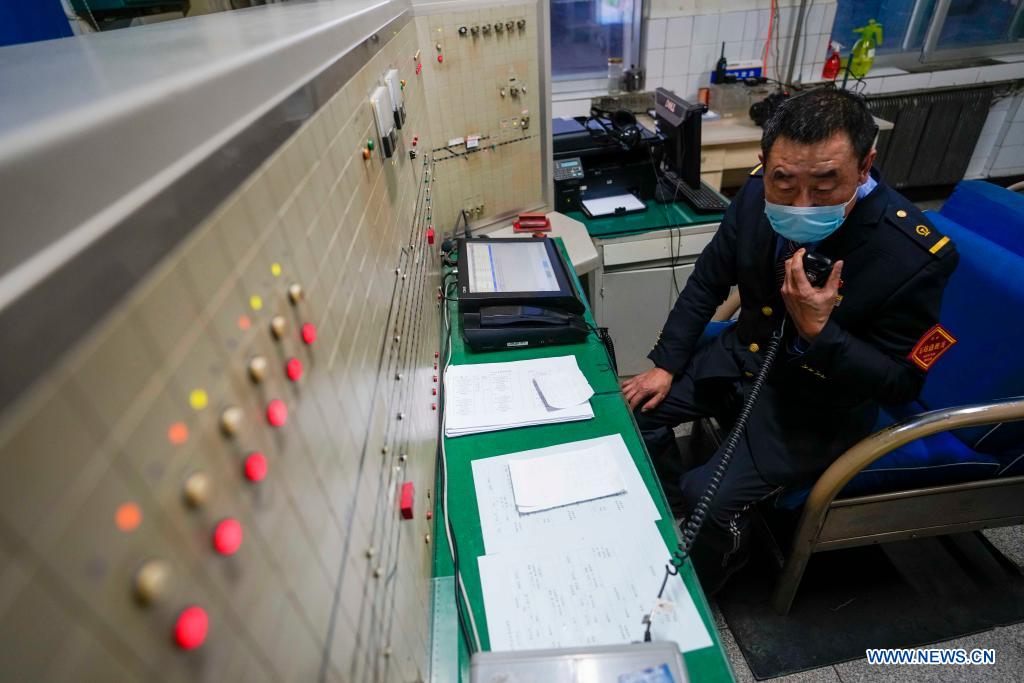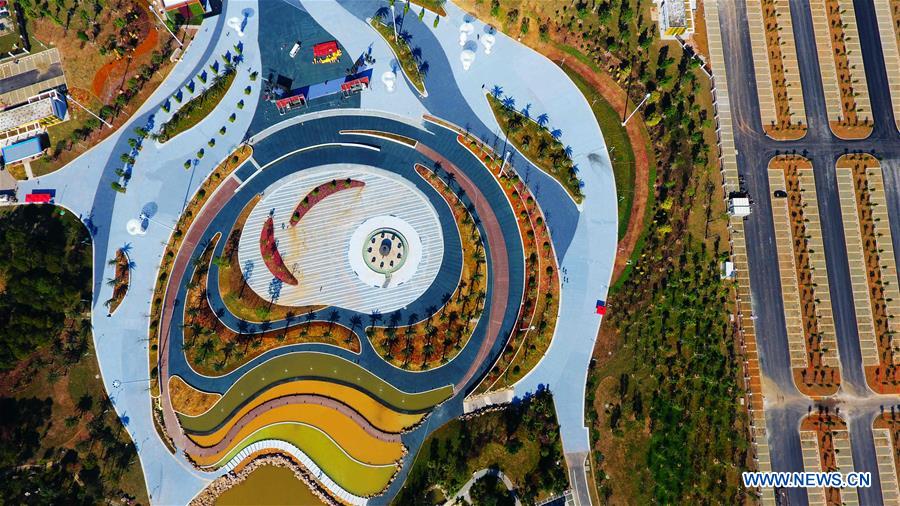
Niu Xinyuan is on duty at the Hongguang Station in Hami City, northwest China's Xinjiang Uygur Autonomous Region, on Feb. 24, 2021.
A career relay of three generations over 70 years within the same family has witnessed the astonishing development of railway transportation in northwest China's Xinjiang Uygur Autonomous Region. Xinjiang has always been well noted for its harsh geological and climate environment ranging from vast deserts, snow-clad mountains, devastating winds, to salty marshes, all of them natural enemies to railway construction and operation. Niu Jiashan, 91, grew up in east China's Shandong Province and was dispatched in 1950 to build the Lanzhou-Urumqi railway connecting Gansu Province, also in northwest China, and Xinjiang. He moved along as the railway line extended, and chose to stay and work in Xinjiang when the project concluded. Niu Xinyuan, 59, son of Niu Jiashan and head of Hongguang railway station in Hami, started his career in 1982, following the footsteps of his father. Unlike Niu Jiashan who devoted most of his working years maintaining a 70-kilometer section of railway track, Niu Xinyuan has left his footprints all over the 140,000 square kilometers land of Hami City. He said he was able to work at so many places and to experience more because the level of automation in the railway system had been increasing over the decades and fewer people were needed at a single site. Niu Ruiqing, early 30s, son of Niu Xinyuan, has brought his seven years of experience in locomotive piloting to his current post as an assistant engineer responsible for management of special-purpose equipment for track and machinery maintenance. Thanks to modern equipment, he said, ballast bed cleaning for a kilometer of railway track merely takes 3.5 hours of 80 workers, instead of 4 hours of 3,000 workers with the traditional manner. The story of the Niu family is just one of thousands of its kind behind the game-changing development of railway transportation in Xinjiang. (Xinhua/Zhou Ye)













